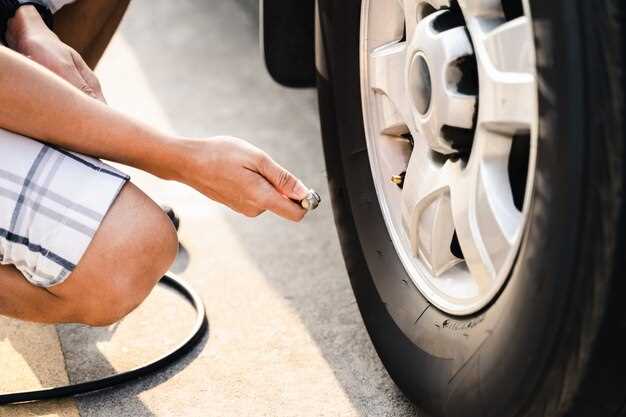
Ensuring the safety of your vehicle begins with proper inspection of its tires. A regular DIY tire check can significantly enhance your driving experience and reduce the risk of accidents on the road. Tires are the only contact between your vehicle and the road, making it crucial to keep them in optimal condition for safe driving.
In this guide, we will walk you through essential steps for conducting a thorough tire inspection at home. From examining tread depth to checking for signs of wear and tear, each aspect plays a vital role in maintaining tire health. Understanding how to perform these checks will empower you to take action before minor issues escalate into more significant problems.
With a few basic tools and some knowledge, you can easily manage your tire maintenance without the need for professional assistance. This DIY approach not only saves money but also allows you to develop a deeper appreciation for the importance of tire health in overall vehicle safety.
Identifying Tread Wear Patterns and Depth
Regular tire inspection is essential for ensuring optimal safety while driving. One of the key aspects of tire maintenance is identifying tread wear patterns and measuring tread depth. This process can be done efficiently through simple DIY methods.
Tread wear patterns can provide significant insights into the condition of your tires and may indicate alignment issues, inflation problems, or other mechanical concerns. Common patterns include uneven wear, cupping, and bald spots. Uneven wear, often seen on the inside or outside edges of the tire, suggests that the wheel alignment may be off. Cupping, characterized by a scalloped appearance, typically points to shock absorber problems. Bald spots indicate that the tread has worn down completely in certain areas, which can lead to decreased traction and increased risk of hydroplaning.
To accurately assess tread depth, use a simple tool like a tread depth gauge or a coin for a DIY approach. Insert the gauge into the grooves of the tread. Ideally, the depth should be at least 2/32 of an inch; any less than that indicates it’s time for a tire replacement. When using a coin, a quarter can be effective: if the top of George Washington’s head is visible when inserted into the tread, it’s time to consider new tires.
Conducting regular inspections for tread wear patterns and depth not only enhances driving safety but also extends the life of your tires. By recognizing these signs early, you can avoid more significant issues and maintain better vehicle performance.
Checking for Visible Damage and Integrity

Regular tire inspection is essential for ensuring your vehicle’s safety on the road. One of the primary aspects to focus on during this process is the examination of visible damage and overall integrity of each tire.
Start by visually inspecting the tire’s sidewalls and tread. Look for any signs of cuts, cracks, or bubbles. These imperfections can indicate potential issues that may compromise the tire’s performance. A bubble, for instance, may suggest that the tire’s internal structure is damaged, which can lead to blowouts.
Next, examine the tread depth. Insufficient tread can negatively affect traction, especially in wet conditions. Utilize the penny test: insert a penny into the tread, with Lincoln’s head facing down. If you can see the top of Lincoln’s head, it’s time to replace your tire.
Additionally, check for any uneven wear patterns. This may signal improper alignment, inadequate inflation, or other mechanical problems. Regularly monitoring these aspects will aid in maintaining your tires’ integrity and prolong their lifespan.
Finally, don’t forget to inspect the valve stems for cracks and leaks. Damaged valve stems can lead to air loss, affecting tire pressure and safety.
Maintaining Proper Tire Pressure and Alignment

Maintaining proper tire pressure is crucial for vehicle safety and performance. Under-inflated tires can lead to increased wear, reduced fuel efficiency, and compromised handling. On the other hand, over-inflated tires may cause a rough ride and diminish traction. Regular tire inspection should include checking the tire pressure at least once a month, as well as before long trips. Always consult the vehicle’s manual for the manufacturer-recommended pressure levels, and use a reliable gauge to ensure accuracy.
Tire alignment is equally important for safe driving. Misaligned tires can result in uneven tire wear, poor handling, and decreased fuel efficiency. Symptoms of misalignment often include the vehicle pulling to one side, a crooked steering wheel, or uneven tire wear patterns. Regular alignment checks are essential, especially after hitting potholes or curbs. Keeping tires properly aligned enhances overall vehicle stability and extends tire lifespan, leading to safer driving conditions.
In summary, both tire pressure and alignment play significant roles in vehicle safety. Consistent inspection and maintenance routines can prevent unnecessary wear, improve fuel efficiency, and ensure optimal handling throughout the lifespan of your tires.




